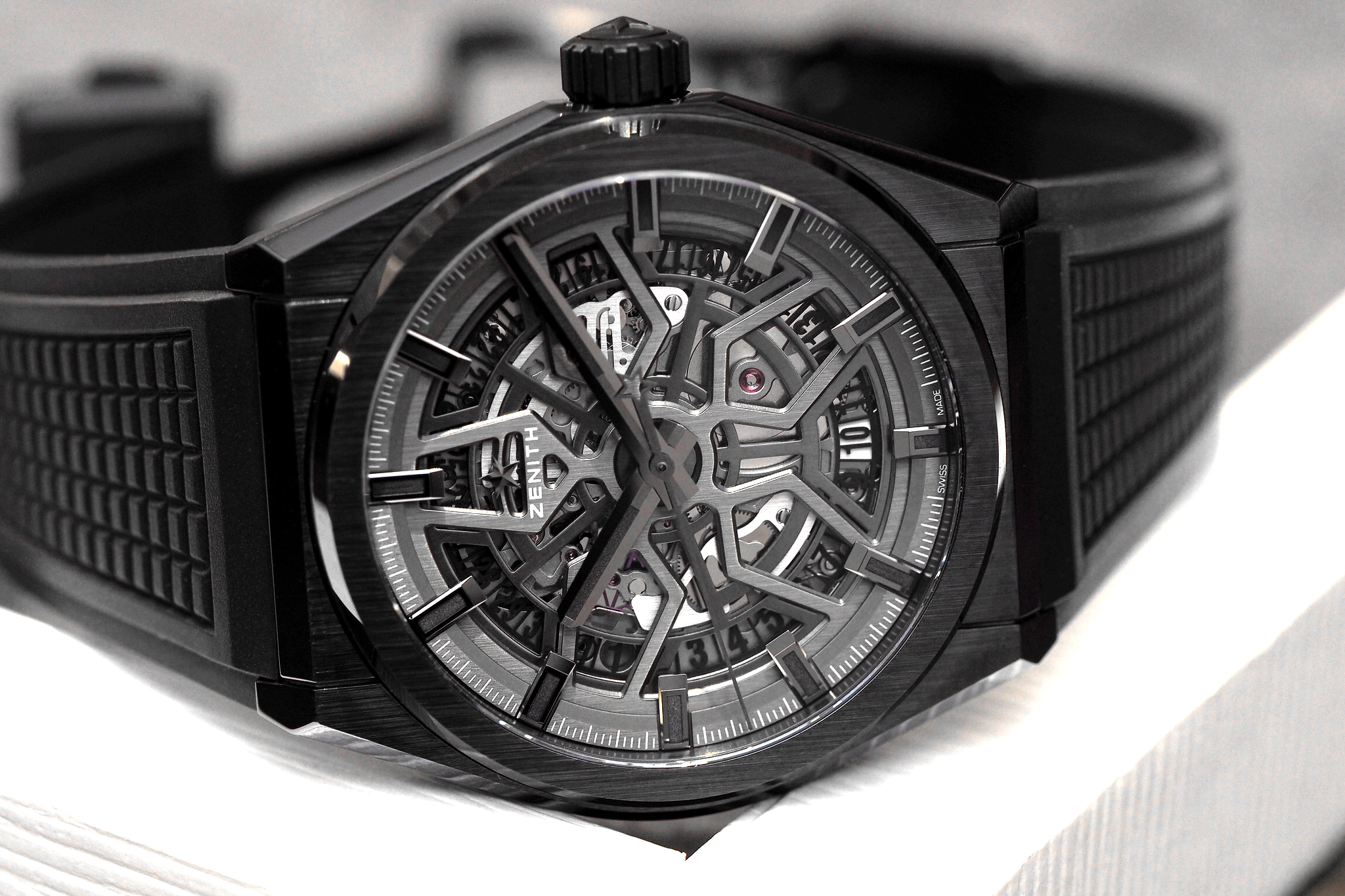While the new ceramic Defy collection by Zenith comes in white, blue, or black — the black is the most pragmatic.
After having some hands-on time with the Defy Classic Black Ceramic it gave me a better sense of the angular case watches on the market as a whole. You’ve got the Gentas such as those from AP, Patek, and IWC, and the Overseas by Vacheron, designed by Hysek (not Genta), then you have GP with their growing Laureato collection, and relative newcomer Maurice Lacroix with their impressive Aikon line. There are of course many more, but these are the most notable examples that come to mind, especially in the upper price points, with the exception of ML which can be had at an insanely low starting price of $1,750 (with an in-house case and bracelet to boot).
The Defy is not only a skeleton watch, with an open dial and partially cut-out movement, but it’s also housed in a ceramic case, which makes it lighter than steel, and far more scratch resistant. And it allows for a number of case colors, which is an advantage if that’s what you are looking for.
At 41 mm the case is nicely sized, and any bigger, especially with this type of case, is arguably too big. An integrated rubber bracelet is attached directly to the case and the feel is very soft and premium, as you would want, with a blackened metal folding clasp to secure the watch.
The dial features a mixture of different shades of darkened metals, with mostly brushed or matte surfaces, and a little bit of polish for contrast. Despite being a skeleton dial – which by nature usually makes it harder to read the time at a glance – Zenith has done an excellent job not sacrificing legibility in favor of aesthetics. Twelve large, faceted, applied hour indices, with none partially obstructed and cut-off, and a highly readable chapter ring coupled with prominent hour, minute, and second hands have been well thought out to the point that the minute hand reaches to the far edges of the dial (something I wish more companies would do), further enhancing that ability to see the time.
Even the date wheel has been nicely executed. It encircles the dial just inside the chapter ring and is fully visible through the cut-outs in the dial, with the current date visible through an aperture at 6 o’clock.
Many ceramic cases are either finished with too much matte or too much polish, and the result tends to be a plasticky toy-like surface that cheapens that overall feel. This is none of those, instead just the right amount of vertical brushing combined with a touch of polishing on the case flanks and around the bezel edge, resulting in a watch with a premium look that reminds me more of blackened titanium or steel than ceramic, yet possesses all the lightness and scratch resistance of ceramic.
Driving the hours, minutes, seconds, and date is Zenith in-house automatic Elite 670 SK caliber which has an oscillating weight in the shape of a star, visible through the sapphire caseback, which is secured via four screws. The star-shaped weight seems cool in theory but in reality, I’d prefer less obstruction of the movement, but not a deal breaker. The pallet-lever and escape-wheel are made from purple silicon and can be seen oscillating at 4Hz (or 28,800 times per hour) from the dial side, in between 9 and 10 o’clock. The 187 component movement does not operate at Zenith’s famous high-beat, which is 5Hz, but 4Hz is still a modern rate and completely sufficient. The power reserve is 50-hours.
The lume on the hour and minute hands and hour markers is black and glows green at night. Water-resistance is 100 meters.
If you want a black ceramic, skeleton watch, with a manufacture movement, an angular design, and the versatility to wear properly with long or short sleeves, you’ll be hard-pressed to find a better value than this. It’s also available in titanium, for a grand less.

















